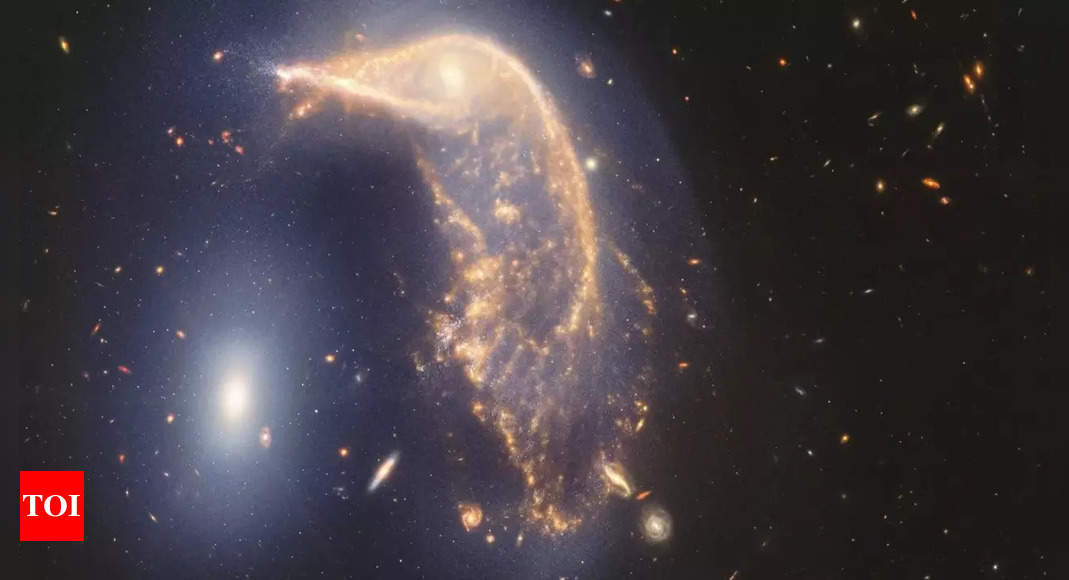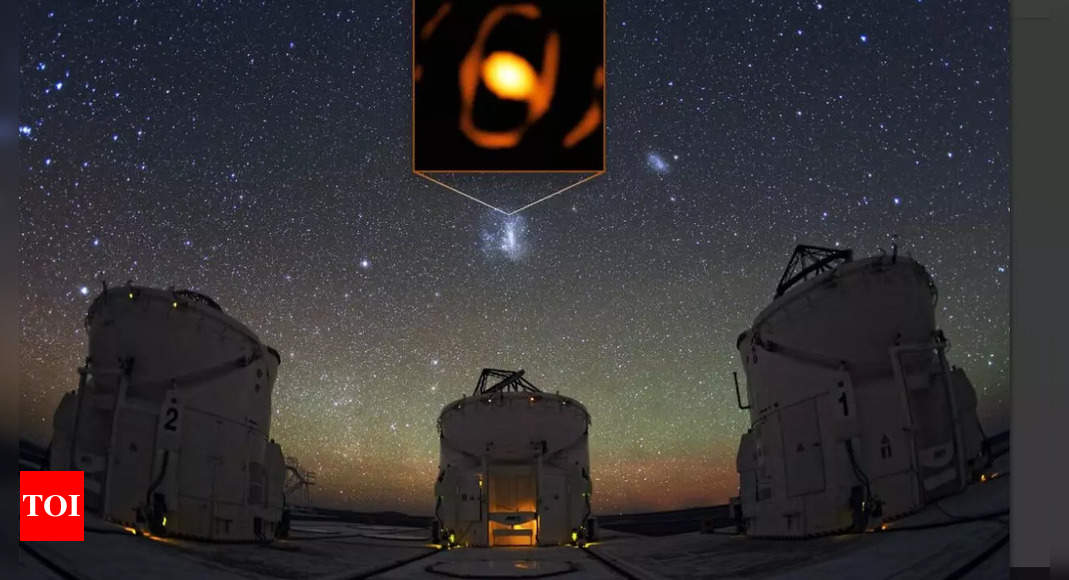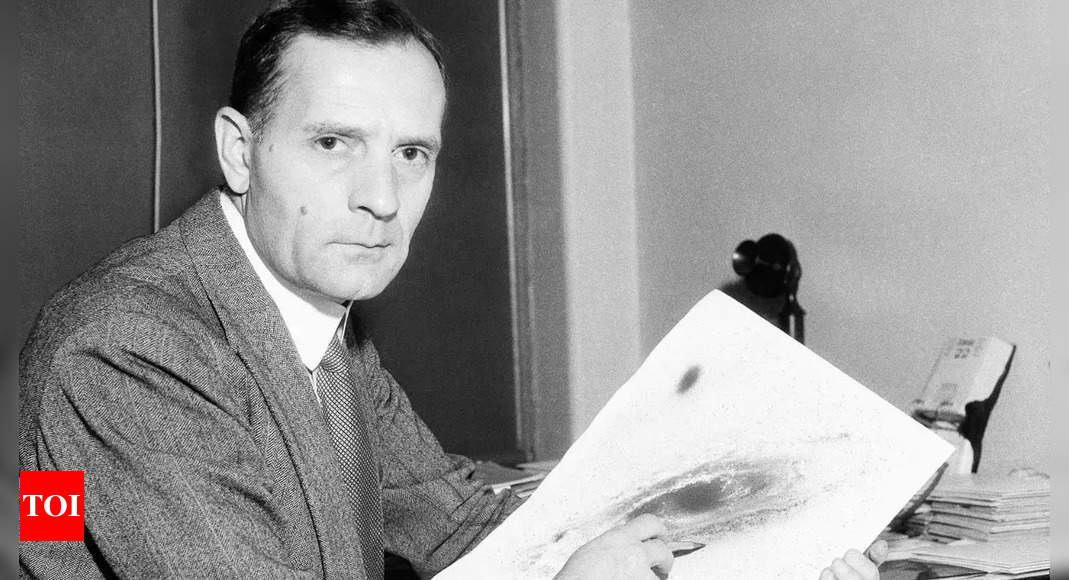
Nasa on Friday unveiled a set of images of two galaxies merging in sort of a “cosmic ballet“. The galaxies, affectionately named the Penguin and the Egg, are located 326 million light-years away in the constellation Hydra.
The release of these images marked the second anniversary of the telescope’s first scientific results.
The image was taken by the James Webb Space Telescope which was launched in 2021 and began collecting the data since that year.
Since becoming operational, Webb has observed galaxies teeming with stars that formed within a few hundred million years of the Big Bang event that marked the beginning of the universe about 13.8 billion years ago.
“We see two galaxies, each a collection of billions of stars. The galaxies are in the process of merging. That’s a common way that galaxies like our own build up over time, to grow from small galaxies – like those that Webb has found shortly after the Big Bang – into mature galaxies like our own Milky Way,” Reuters quoted Jane Rigby, Nasa Webb senior project scientist, as saying.
The Penguin and Egg galaxies, collectively known as Arp 142, are shown in the images connected by a haze of stars and gas as they slowly merge. The Penguin galaxy, formally called NGC 2936, is a distorted spiral galaxy, while the Egg galaxy, NGC 2937, is a compact elliptical galaxy. Their interaction began between 25 and 75 million years ago, and they are expected to become a single galaxy in hundreds of millions of years.
Webb has made significant contributions to the understanding of the universe, detecting the earliest known galaxies and providing insights into exoplanet composition and star-forming regions.
“This mission has allowed us to look back to the most distant galaxies ever observed and understand the very early universe in a new way,” said Mark Clampin, astrophysics division director at NASA headquarters. “For example, with Webb, we’ve found that these very early galaxies are more massive and brighter than we expected, posing the question: How did they get so big so quickly?”
As the largest and most powerful telescope ever put in space, Webb specialises in capturing infrared light, allowing it to see through dust and gas and examine the composition of exoplanet atmospheres with unprecedented detail. Looking to the future, Clampin added, “Some of Webb’s most exciting investigations will be the things we haven’t even thought of yet.”
The release of these images marked the second anniversary of the telescope’s first scientific results.
The image was taken by the James Webb Space Telescope which was launched in 2021 and began collecting the data since that year.
Since becoming operational, Webb has observed galaxies teeming with stars that formed within a few hundred million years of the Big Bang event that marked the beginning of the universe about 13.8 billion years ago.
“We see two galaxies, each a collection of billions of stars. The galaxies are in the process of merging. That’s a common way that galaxies like our own build up over time, to grow from small galaxies – like those that Webb has found shortly after the Big Bang – into mature galaxies like our own Milky Way,” Reuters quoted Jane Rigby, Nasa Webb senior project scientist, as saying.
The Penguin and Egg galaxies, collectively known as Arp 142, are shown in the images connected by a haze of stars and gas as they slowly merge. The Penguin galaxy, formally called NGC 2936, is a distorted spiral galaxy, while the Egg galaxy, NGC 2937, is a compact elliptical galaxy. Their interaction began between 25 and 75 million years ago, and they are expected to become a single galaxy in hundreds of millions of years.
Webb has made significant contributions to the understanding of the universe, detecting the earliest known galaxies and providing insights into exoplanet composition and star-forming regions.
“This mission has allowed us to look back to the most distant galaxies ever observed and understand the very early universe in a new way,” said Mark Clampin, astrophysics division director at NASA headquarters. “For example, with Webb, we’ve found that these very early galaxies are more massive and brighter than we expected, posing the question: How did they get so big so quickly?”
As the largest and most powerful telescope ever put in space, Webb specialises in capturing infrared light, allowing it to see through dust and gas and examine the composition of exoplanet atmospheres with unprecedented detail. Looking to the future, Clampin added, “Some of Webb’s most exciting investigations will be the things we haven’t even thought of yet.”









